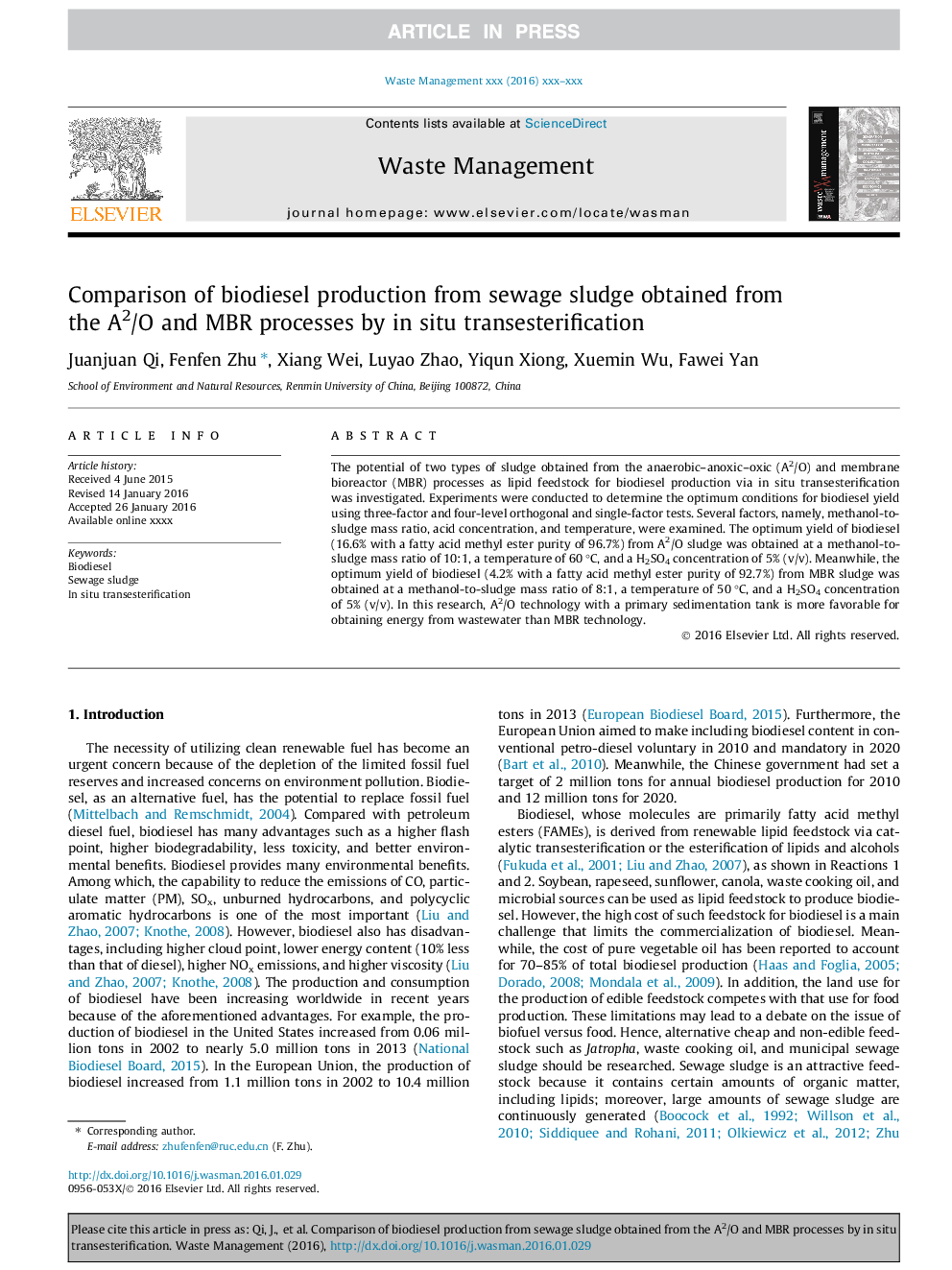| Article ID | Journal | Published Year | Pages | File Type |
|---|---|---|---|---|
| 6353783 | Waste Management | 2016 | 9 Pages |
Abstract
The potential of two types of sludge obtained from the anaerobic-anoxic-oxic (A2/O) and membrane bioreactor (MBR) processes as lipid feedstock for biodiesel production via in situ transesterification was investigated. Experiments were conducted to determine the optimum conditions for biodiesel yield using three-factor and four-level orthogonal and single-factor tests. Several factors, namely, methanol-to-sludge mass ratio, acid concentration, and temperature, were examined. The optimum yield of biodiesel (16.6% with a fatty acid methyl ester purity of 96.7%) from A2/O sludge was obtained at a methanol-to-sludge mass ratio of 10:1, a temperature of 60 °C, and a H2SO4 concentration of 5% (v/v). Meanwhile, the optimum yield of biodiesel (4.2% with a fatty acid methyl ester purity of 92.7%) from MBR sludge was obtained at a methanol-to-sludge mass ratio of 8:1, a temperature of 50 °C, and a H2SO4 concentration of 5% (v/v). In this research, A2/O technology with a primary sedimentation tank is more favorable for obtaining energy from wastewater than MBR technology.
Related Topics
Physical Sciences and Engineering
Earth and Planetary Sciences
Geotechnical Engineering and Engineering Geology
Authors
Juanjuan Qi, Fenfen Zhu, Xiang Wei, Luyao Zhao, Yiqun Xiong, Xuemin Wu, Fawei Yan,
